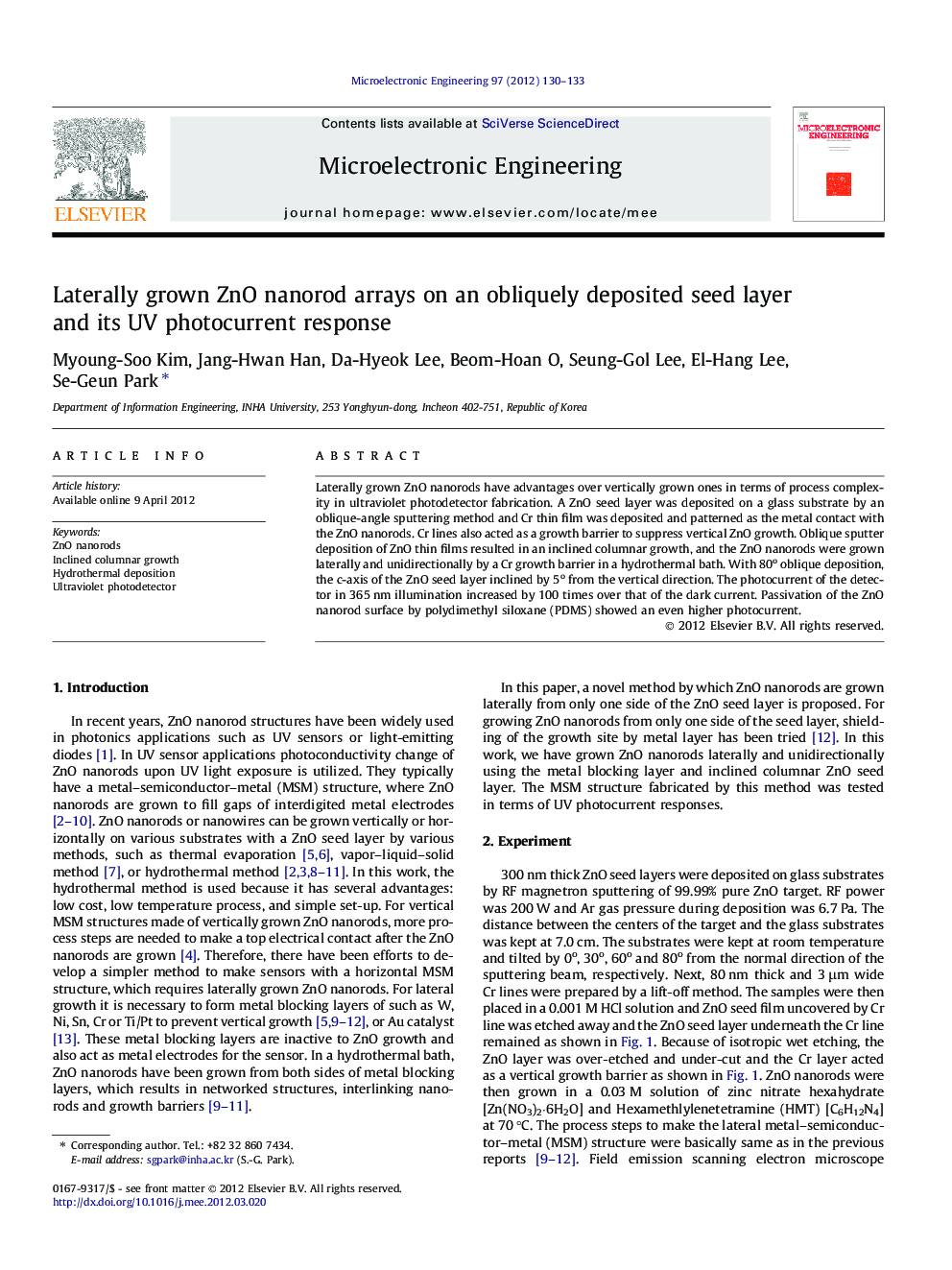| Article ID | Journal | Published Year | Pages | File Type |
|---|---|---|---|---|
| 544352 | Microelectronic Engineering | 2012 | 4 Pages |
Laterally grown ZnO nanorods have advantages over vertically grown ones in terms of process complexity in ultraviolet photodetector fabrication. A ZnO seed layer was deposited on a glass substrate by an oblique-angle sputtering method and Cr thin film was deposited and patterned as the metal contact with the ZnO nanorods. Cr lines also acted as a growth barrier to suppress vertical ZnO growth. Oblique sputter deposition of ZnO thin films resulted in an inclined columnar growth, and the ZnO nanorods were grown laterally and unidirectionally by a Cr growth barrier in a hydrothermal bath. With 80o oblique deposition, the c-axis of the ZnO seed layer inclined by 5o from the vertical direction. The photocurrent of the detector in 365 nm illumination increased by 100 times over that of the dark current. Passivation of the ZnO nanorod surface by polydimethyl siloxane (PDMS) showed an even higher photocurrent.
Graphical abstractFigure optionsDownload full-size imageDownload as PowerPoint slideHighlights► Inclined columnar ZnO seed layers: grown by an oblique sputter deposition. ► Laterally and unidirectionally grown ZnO nanorods: role of Cr barrier mask that prevents vertical growth. ► Increased photocurrents of ZnO UV detector: photocurrents are 100 times higher than dark currents.
